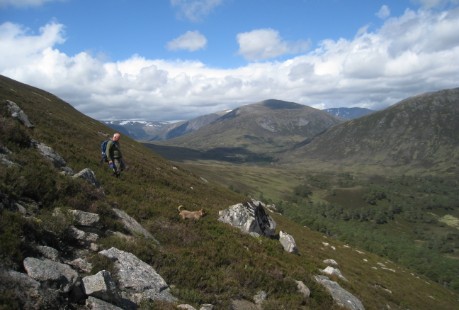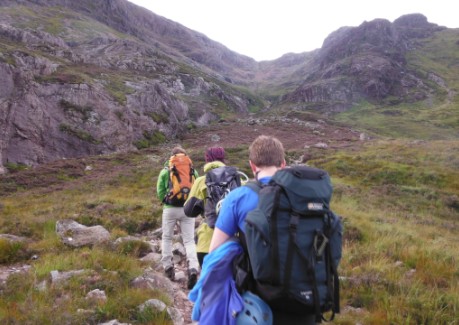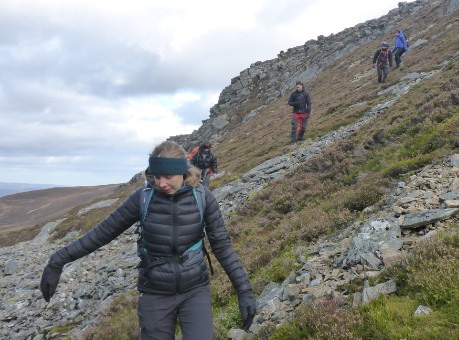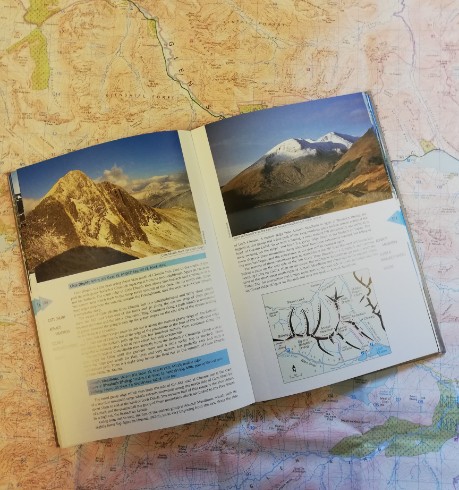Youíll hear it often: make sure to plan your route.
But what does it mean? How DO you plan a route?
Thereís plenty of inspiration for days out in the hills, whether youíre reading a traditional guide book or scrolling through online guides such as Walkhighlands.
But thereís more to planning the day than picking a route and reading the directions.
There are four basic factors to be considered:

This is more than just checking the weather forecast. Itís as basic as considering whether it will be summer or winter conditions. If itís a spring trip, will there be late-lying snow to consider? Has it been raining a lot recently? If it has then stream and river levels may be higher than normal.
Always check what the weather forecast is for the day of your trip. The weather after the six-o-clock news isnít good enough; go online and check either the Mountain Weather Information Service (MWIS) or the Met Office Mountain Weather forecast. Better still, check both: theyíre presented in different formats so both are useful to get a more complete picture of what the weather is likely to be for your trip. Check the forecast in the days before your trip and have a final check on the day itself, so you have the latest updates.
Is everyone in your group fit enough, experienced enough and properly equipped for your planned journey? We all like to be pushed a bit sometimes Ė itís how we progress Ė but assess the difficulties and hazards of your planned journey and the capabilities of your party and make sure youíre not asking too much of anyone.
Remember, safety apart, youíre all meant to be enjoying this! Donít be too ambitious on your first adventures into the hills - the best way to progress is to start easy and build up gradually or join a hillwalking club to get more experience with like-minded people.


Itís tempting just to check the start point of your route and that thereís a path to where youíre going. But proper planning means studying the map to see what sort of terrain youíre going to be dealing with at all stages of the journey. Will there be steep ground? Are there awkward rivers or streams to cross? Any cliffs to avoid? Thick tree plantations which can slow progress and make navigation difficult?
And while youíre checking out the type of terrain along the way, make a note of key places on your route. These may be river crossings, sections of scrambling or difficult ground, or even just a halfway point. Theyíre all places which are important on the journey, where you may have to change plans from one route to an alternative if, for example, you canít get cross the river safely, or if you reach the halfway point and realise you donít have enough time to reach your original destination and return.
At all these key places you should have an alternative plan in mind. That may not be as unsatisfying as just turning back: many times there will be an alternative route you can do Ė which, of course, should also be fully planned out.
Make sure you have the right clothing and footwear and have packed everything youíll need for your journey.

More properly, this section should be headed 'The alternative plans'. Because there's a lot more to alternative plans that just having it in mind to do a smaller hill if the main objective has its head in the clouds.
Your primary route should also have built-in alternatives.
In most walking guidebooks each route will be accompanied by a map, with the line of the route marked out as a continuous dotted line, often with arrows to show direction of travel. However, in your planning you should study the wider area of the map and not restrict yourself to that one narrow line. You may, if it turns out to be a good day with everyone walking well, want to extend your route to include another nearby hill. But at the very least you should be looking for key points on the route where difficulties may be encountered and then for alternative routes that can bypass the difficulties or provide a shorter or easier route back to your start/finish point.
Needless to say, you should study these alternative routes closely to make sure they arenít landing you with worse problems than those youíre trying to avoid.
The process of planning both main route and alternatives may seem laborious and time consuming, but it will give you a deeper understanding of the area youíll be walking in, and when the day of the walk comes youíll have greater appreciation of the landscape around you and youíll find navigation will fall into place much easier. And as you gain experience youíll find that studying the whole area rather than just a linear route, and identifying alternative routes, will all become second nature.
For more information on planning to get the best out of your trip to the hills, and other aspects of hillwalking, try Sofa 2 Summit, our new online program to help you get the most out of hiking in the hills this spring and summer.
It's for people new to hiking who wants to explore Scotland's hills and mountains, or anyone who wants to learn a bit more or take a refresher after a break from hill walking during lockdown.
Register now to get started on this 7 week program and let us help you get from sofa to summit!
